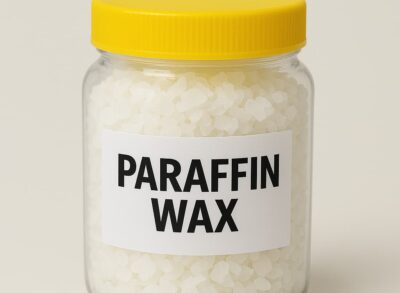
Paraffin Wax
Paraffin wax is a white or colorless soft solid derived from petroleum, coal, or shale oil. It consists primarily of saturated hydrocarbons (alkanes). It is odorless, tasteless, and insoluble in water, but soluble in ether, benzene, and certain esters.
It is widely used in candles, coatings for wax paper or fabric, polishes, cosmetics, electrical insulators, and food-grade applications.
Types of Paraffin Wax
Paraffin wax can be categorized based on:
1. Oil Content
The oil content determines the softness and application. It’s classified into:
Fully Refined Paraffin Wax (FRPW):
Oil content: <0.5%
White, odorless, and highest purity
Used in cosmetics, food packaging, pharmaceuticals, and candles
Semi Refined Paraffin Wax (SRPW):
Oil content: 0.5–1.5%
Slightly yellowish, less pure than FRPW
Common in match, rubber, and printing industries
Crude or Scale Wax:
Oil content: >5%
Darker, greasy
Used in industrial applications like rust protection and waterproofing
2. Melting Point
Paraffin waxes are also classified by melting point range:
Low Melting Point Wax (47–54°C):
Softer, more flexible
Used in creams, lotions, and candle blends
Medium Melting Point Wax (54–60°C):
Common in standard candle production
High Melting Point Wax (>60°C):
Harder and more brittle
Suitable for pillar candles, technical uses
3. Applications
Some specialized types based on use include:
Food-grade Paraffin Wax:
Used to coat fruits, vegetables, candies, and cheese
Must comply with FDA or food safety standards
Industrial Paraffin Wax:
Used in packaging, rubber, electrical insulation, and lubricants
Cosmetic-grade Paraffin Wax:
Used in spas, skin softening treatments, and therapeutic wraps.
Click here for more information about Paraffin Wax.

